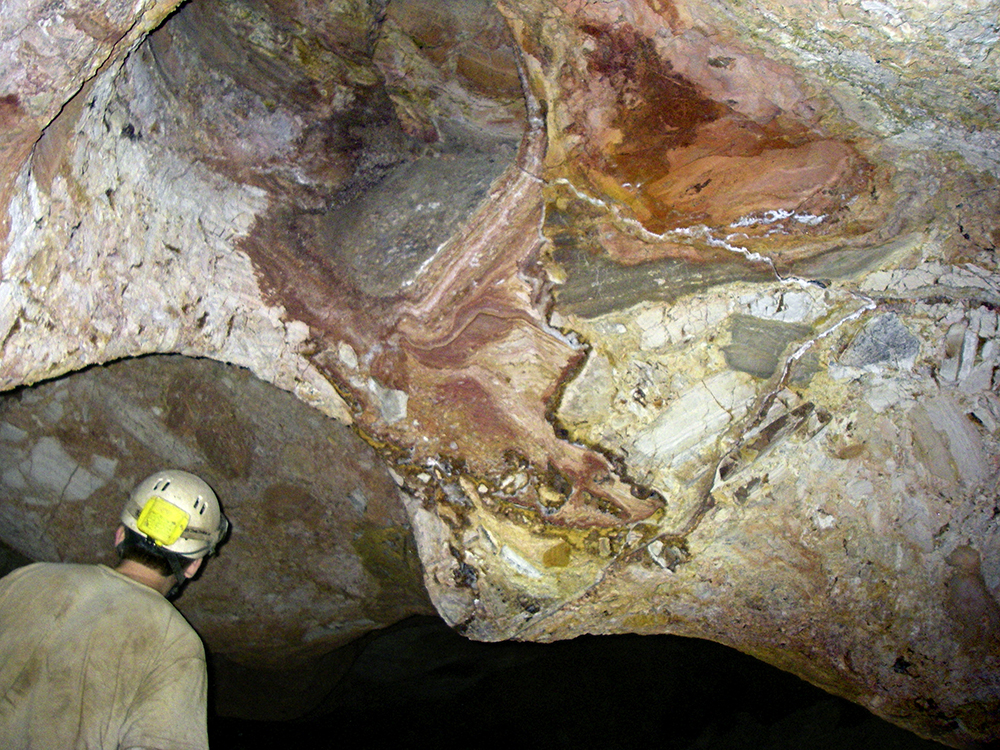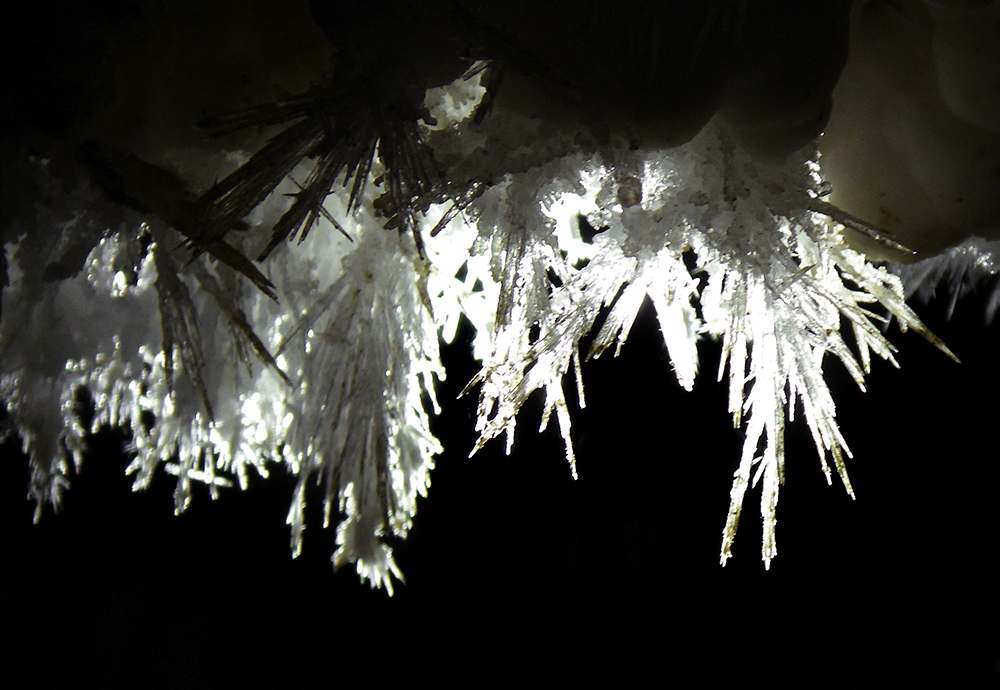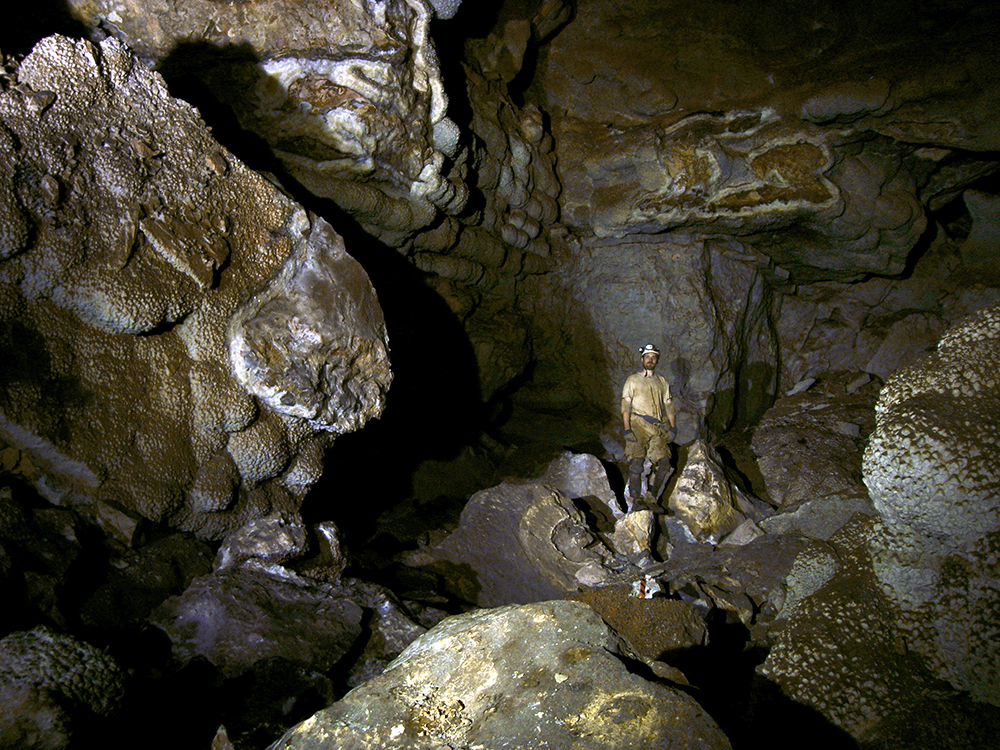
An amazing day caving with Dan Austin in Jewel Cave.
Western Wonderland Roadtrip
Chris and I were excited to have three caving trips lined up in two world-class caves: Jewel and Wind Caves. Sunday we arrived bright and early for our first trip underground into Jewel. Dan Austin, the Paha Sapa Grotto vice chair (which is the only South Dakota grotto), took us underground for an eight-hour trip. He took Chris and I on a measly couple-mile tour amid the 142 miles of cave. Jewel is the second longest cave in the world, only to be surpassed by the Mammoth Cave System in nearby Kentucky.
As a South Dakota native, Dan is certified by the National Park System as a trip leader. He told us it took 100 hours of logged underground time to become one. I think it would be easy tooling around 142 miles of passage and surveying new passage to build up 100 hours.
The main difference for us, being eastern cavers, was the manganese present in Jewel. The manganese dioxide, called pyrolusite, covered the floors of all the lower passages in the cave. It looked like dark shale covering the floor in chips and slabs. Unknowing to the caver, if you stepped on them, you would break apart the deposits and would release a monster to reckon with. Once you break up the manganese, it turns into a thick, oily, slick surface that stains everything you touch.
A distinctive path showed the way where everyone had been before us. You could tell if someone had strayed from the established route by a single step. Also, the walls were covered in the black manganese where people used formations as handholds. It was strange for us not being able to go our own way and check out leads as we seemed fit. We became very aware of all of our movement and it was clear that we had to stay on the path to preserve the beauty of the cave.
Dan knew his cave very well. He was constantly throwing facts at us along the way. Things like the nailhead spar that we saw on the walls covered about 80 percent of the cave. It supposedly varied from an inch to 2.5 feet thick in the lower levels. We mostly saw 6 to 10-inch thick nailhead spar, which gives great traction under the slick manganese residue. Dan also told us of how climatologists have been conducting studies on the air flow of the cave. By calculating how much Jewel breathes, things like cave volume and connections to other caves can be better determined. He said that from the current air volume, anywhere from 5-50 percent of the cave has been discovered. Now that’s a lot of cave to survey!
There is also the mysterious “white stuff” that appears in Jewel. This very technical name is given to this white residue that appears to cover the walls in the lower levels of Jewel. Dan said the mineral content has been tested and scientist still do not know what the compound is made of or how it forms in the cave. Hence, the highly scientific name of “white stuff” was born.
Jewel cave is also the first cave for both Chris and I to encounter moonmilk. It is a white gummy material with the consistency of cottage cheese. It looks like normal white calcite or aragonite deposits on the walls and the only way to tell for sure that it’s moonmilk is to touch it, thus destroying the area. Moonmilk is actually a magnesium carbonate compound.
The highlight and destination of our tourist trip into Jewel was to see the amazing frostwork at Bunyan’s Foot. This huge formation, which looked like the foot of a giant, hangs over a breathing tube that leads down from the loft level to the next lowest level. Once climbing up to these levels, the cave changes dramatically. There is no more nailhead spar, but only delicate sand formations lining the walls with colors of red, tan, yellow, white and black. We even saw bat scratches, evidence from long ago of a bat population in the cave miles from the natural entrance of today. Bunyan’s Foot was the most amazing frostwork I’ve ever seen. The fragile white hairs ranged from tiny little things you can see in Virginia’s highly decorated cave of Paxtons to several inches long. I felt as if I would break them if I breathed too hard. The entire rock was covered with frost, as was the area below it. We stopped there to eat lunch, being mindful not to drop any crumbs on the cave floor, and take photos.
One interesting thing I noticed was that there were many features and passages that were unnamed. Many squeezes and rooms that were forgotten to the many other miles of “better” passage. I guess it would be too much naming everything. You would have a list of place-names 50 pages long in a cave like Jewel.
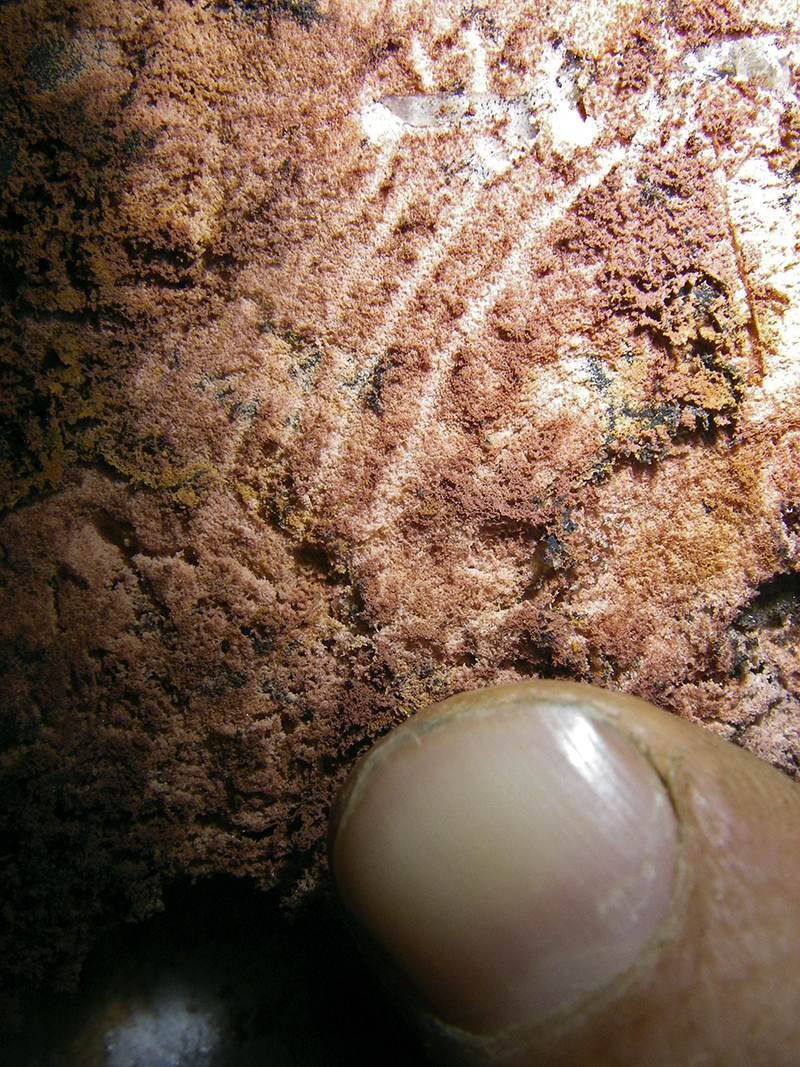
A cute little bat scratch on the wall.
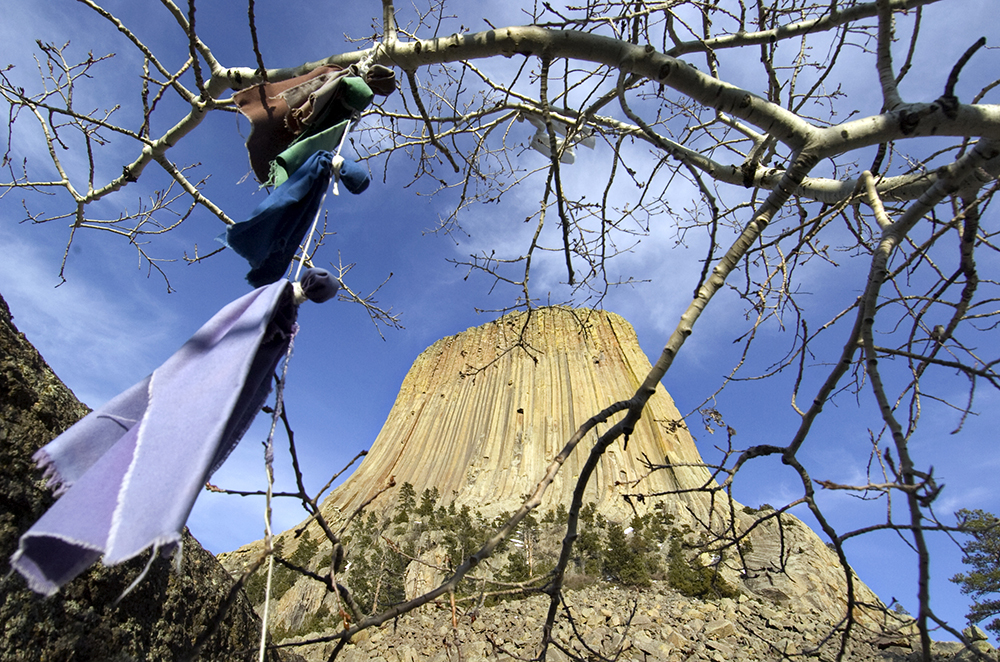
We finished out our day visiting Devils Tower National Monument in Wyoming. Here are prayer ties on a tree.
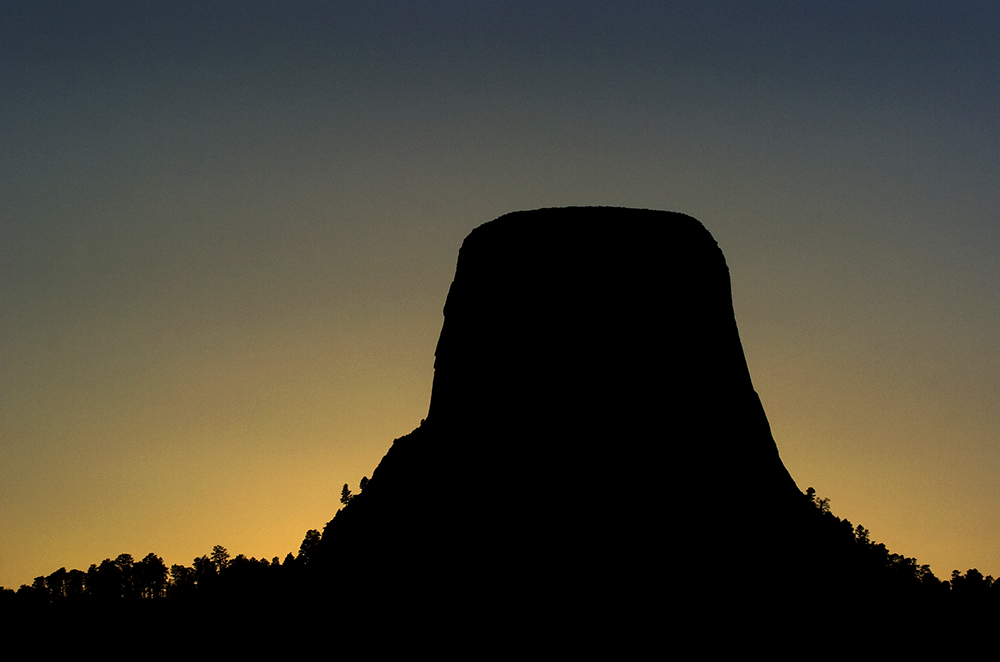
And to finish our our amazing day, the sunset behind Devils Tower.
